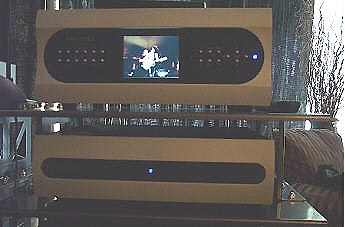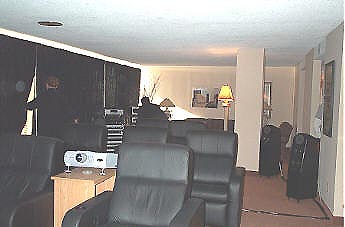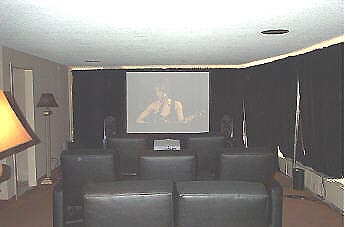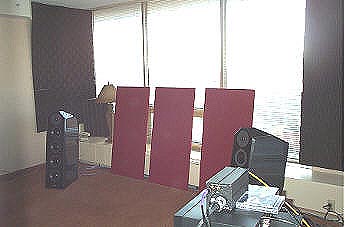|
|
|
|
|
|
|
|
|
|
|
 |
|
|
|
 |
|
|
|
 |
|
|
|
American by birth, French by orientation. Inventor of SOTA GaAS integrated circuit devices for telecommunications giant Honeywell. Creator of Ten Mountains, an engineering brain trust eventually acquired by AMCC Applied Micro Circuits Corporation where he designed the 10GHz optical network receiver amplifier that grew into the industry standard worldwide. President of Bel Canto Design where he released an industry-first FIFO DAC and his "845 physics experiment" high-power SET amp that won a Stereophile Class "A" endorsement and the prestigious Diapason D'or award...
To say that 42-year old John Stronczer has covered some ground is quite the understatement.
During my recent CEDIA 2002 stay in Minneapolis, the opportunity arose to interview him, visit his facility and then audition his personal system. What follows is a retelling of information gathered over a few days worth of conversations and commentary that meandered in and out of tradeshow-related activities.
|
|
|
|
 |
|
 |
|
|
 |
|
|
|
|
|
|
I photographed the above hard-mounted posters in Bel Canto's factory, to document the firm's legacy of their original Orfeo 845 monoblock SETs and solid-state components. It's easy to join the hi-tech bandwagon because it's the current wave to ride. It's another thing entirely to first wrestle with the challenging transformer requirements the 845 triode demands to fulfill its promise as a high-power tube amp; then shift gears and produce a Home Theater processor with the fastest video switching extant. Never mind adapting Tripath Digital Power Processing to High-End applications or creating visionary digital crossover solutions...
|
|
|
But I'm jumping ahead.
Under grave threats from its occupants, I was forbidden -- tactfully restrained, really -- to shoot pix of the actual facility. Truth be told, it did look like a CEDIA-inflicted twister had run amok. To me, it simply suggested a place of work, frozen in time during a short period of intense activity. My desk looks just like it. But you don't embarrass your host, especially when a move into new, bigger quarters is immanent.
Scoping out the joint for KIOs -- kosher image opportunities -- I fixated upon computer renderings of the PRePRo. The final product launched during the show looks uncannily like these drawings, testament to the magical process of transforming concept into material hardware.
|
|
|
 |
|
|
|
 |
|
|
|
|
 |
|
Taking his home turf advantage to heart, Stronczer booked the 14th floor penthouse of the Millennium hotel during CEDIA to demonstrate multi-channel done right.
|
|
|
 |
|
|
|
 |
|
|
|
|
 |
|
 |
|
 |
|
 |
|
To be perfectly honest though, I preferred this system in movie mode over multi-channel SACD music demos. For my taste, the latter recordings still point at a state of infancy that plagues mastering engineers when attempting to figure out what to do with the rears, never mind a center channel that's frankly redundant unless you sit way off-center.
|
|
|
 |
 |
|
Stronczer's adjacent basic 2-channel demo was configured around a Pioneer CD player feeding a DAC2 into a PRe6, then an eVo2 driving Eggleston Works Rosas via Analysis Plus cables. Entering this sanctuary underscored a suspicion. My lack of overt enthusiasm for the multi-channel music format was not a function of hardware blame. Rather, it pointed at a lack of maturity, which fully understands how to mix unobtrusive ambient data into the surrounds in such a way as to not alert the ear-brain that some panning trickery is going on.
In this small room, the relatively modest music system sounded so phenomenally natural, dynamic and involving that the component question was entirely off the hook. I now needed to go back to the Andra IIs fed from bridged eVo 2s and High-End digital front ends in the big room. I requested a stereo-only demo. That drove the nail deep into Count Dracula's music-surround coffin.
Now we were talking again - sweet music like next door, simply more weighty and with the more expansive perspective of the farfield, in this larger space augmented by truly fullrange speakers. (The room, after all, is the biggest "component" in the hardware chain.)
Don't get me wrong. I'm not dissing the multi-channel music format per se. I simply believe it's not yet what it could be - or should be before I abdicate dialed-in 2-channel and buy into the added cost/complexity of doing multi-channel the right way.
|
|
|
|
|
|
 |
|
|
|
 |
|